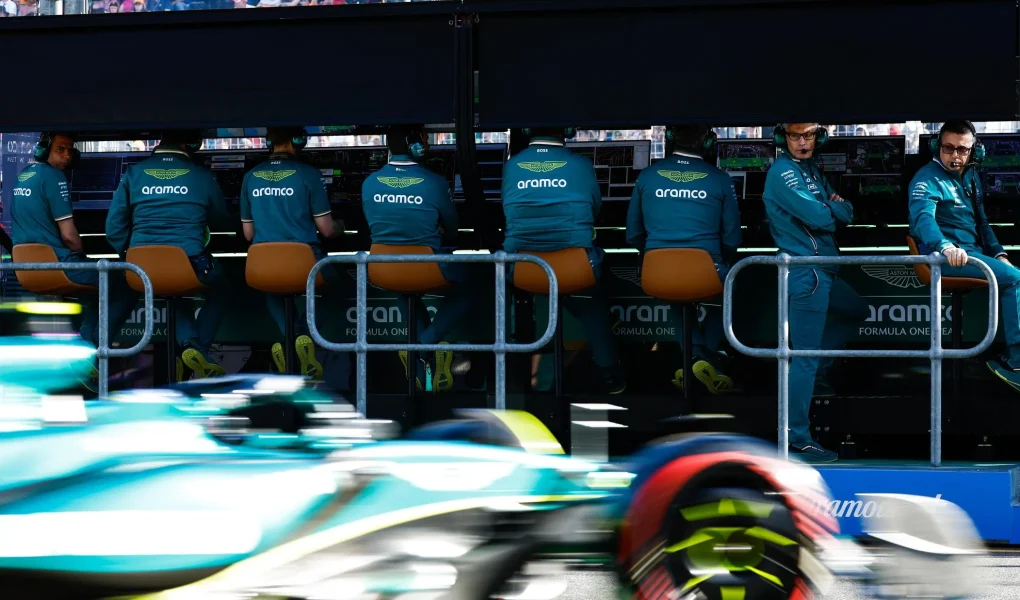lettersforvivian.org – Formula 1 is a high-speed sport where every second counts, and race strategies are critical to securing victory. While the drivers are often the stars, behind the scenes, the team’s strategy plays a pivotal role in determining the outcome of a race. F1 teams use a wide range of tactics—ranging from tire choices to fuel management and pit stops—to maximize performance and gain a competitive edge. This article explores the intricate and multifaceted process of race strategy in Formula 1, looking at how teams plan, adapt, and execute during the high-pressure environment of a Grand Prix.
The Role of the Strategy Team
The backbone of race strategy is the strategy team, which works in close collaboration with the race engineer, the driver, and the rest of the team during a race. This team is tasked with analyzing real-time data, predicting the behavior of competitors, and making split-second decisions. Strategy teams often consist of several key personnel, including:
- Chief Strategist: Responsible for setting the race strategy and making crucial decisions based on data and circumstances.
- Race Engineer: Works directly with the driver and provides updates on tire wear, fuel levels, and other key information.
- Tactical Analysts: Monitor competitors and help assess the impact of various strategies based on live race data.
- Team Principal: The team leader who oversees the entire race strategy and ensures that all decisions align with the team’s overall objectives.
These professionals work together to create a strategy that adapts to the ever-changing race conditions, always adjusting based on tire wear, weather, and other factors.
Key Elements of Race Strategy
Tire Strategy
One of the most crucial aspects of race strategy is tire management. Formula 1 races typically require at least one pit stop, and choosing the right tires at the right time can make or break a race. Teams have access to a variety of tire compounds, including hard, medium, and soft tires, each offering different levels of grip and durability.
- Tire Wear and Pit Stops: Teams must manage tire wear carefully during a race, balancing speed and durability. Soft tires provide the best performance but wear out more quickly, while hard tires last longer but are slower. Teams need to time their pit stops effectively, optimizing the transition between tire compounds to gain the most time on the track.
- Weather Impact: Weather can dramatically affect tire strategy. When rain hits the track, teams must switch to wet-weather tires (intermediates or full wets), a decision that often needs to be made with little warning. Choosing the right moment to make the switch is crucial and requires accurate weather predictions and keen observation of track conditions.
Pit Stops
Pit stops are a pivotal moment in any Formula 1 race, as they can make or break a team’s strategy. The speed and efficiency of a pit stop can often determine a driver’s position on the track. Teams practice their pit stops meticulously to minimize the time spent in the pit lane, with the best teams capable of completing a stop in less than 2.5 seconds.
- Timing of Pit Stops: The timing of pit stops is often dictated by factors such as tire wear, track position, and race traffic. Teams may opt for an early pit stop to avoid being caught in traffic or wait for a safety car period to minimize time lost in the pits. A well-timed pit stop can give a driver a significant advantage, especially when the rest of the grid is still on older tires.
- Pit Stop Strategy for Multiple Cars: When a team has more than one car in the race, it may need to make strategic decisions about how to manage both drivers. This might involve “undercutting” or “overcutting” the other teams by strategically timing pit stops to gain positions.
Fuel Management
While fuel management isn’t as prominent as it used to be in Formula 1 (due to modern hybrid power units), it still plays a crucial role in race strategy. Teams must balance fuel levels to ensure they have enough to finish the race but not so much that it slows down the car.
- Saving Fuel: Some races require drivers to conserve fuel to ensure they have enough for the entire race distance. In these cases, the strategy team will instruct the driver to drive more conservatively, reducing engine power and conserving fuel, which can sometimes affect race pace.
- Fuel Loads at Start of Race: Teams typically start the race with the minimum amount of fuel needed to complete the distance, which helps reduce weight and increase performance. However, this approach requires careful calculation, as running out of fuel mid-race can be disastrous.
Adapting to Race Conditions
Reacting to Safety Cars
Safety cars are one of the most significant disruptors in race strategy. When a safety car is deployed, it slows down the entire race and gives teams the opportunity to pit without losing track position. However, deploying the safety car can create a complex situation where teams must decide whether to pit early or stay out on track.
- Under the Safety Car: Teams may take advantage of the safety car to perform an extra pit stop and switch to fresher tires, which could give them a strategic advantage once the race resumes. On the other hand, staying out on track can preserve track position, particularly if teams anticipate a restart with limited laps remaining.
- Virtual Safety Cars: The introduction of the virtual safety car (VSC) provides teams with the opportunity to slow down the pace of the race without physically deploying the safety car. Teams use this period to make decisions about whether to pit, depending on their tire wear and track position.
Adapting to Track Position
Track position is critical in F1, and strategists must balance the benefits of being in clear air versus being stuck in traffic. Drivers in clean air can push harder and set faster lap times, while those stuck behind other cars are often forced to contend with dirty air, which reduces car performance.
- The Under- and Overcut Strategy: Teams may use an “undercut” or “overcut” strategy to pass competitors without direct overtaking. The undercut involves pitting earlier than your rival, hoping to gain time while they stay on worn tires. The overcut involves staying out longer, hoping that fresher tires after the pit stop will allow the driver to pass others after the pit stops have occurred.
Responding to Competitor Strategies
Formula 1 is a dynamic sport, and strategy often revolves around anticipating and reacting to the moves of competitors. Teams use advanced data analysis to track the performance and pit stop timing of rival teams, and they adjust their strategy accordingly.
- Counter-Strategies: Teams may opt to mirror or counter an opponent’s strategy. For example, if a competitor opts for an early pit stop, a team might respond by waiting for a few laps longer, attempting to gain track position. Alternatively, teams may use information about rival fuel levels, tire wear, and pace to create opportunities for overtaking or defending positions.
Conclusion
Race strategy in Formula 1 is a high-stakes, highly complex process that requires precision, foresight, and adaptability. Teams must continuously analyze data, predict possible scenarios, and make decisions on the fly to ensure the best possible outcome. Every race is different, and the ability to adapt to changing conditions—whether it’s tire wear, weather, or competitor strategies—is what separates the best teams from the rest. While the drivers get the glory, it’s the strategy team’s work behind the scenes that often determines the outcome of a race, making their role just as crucial in the quest for success.




